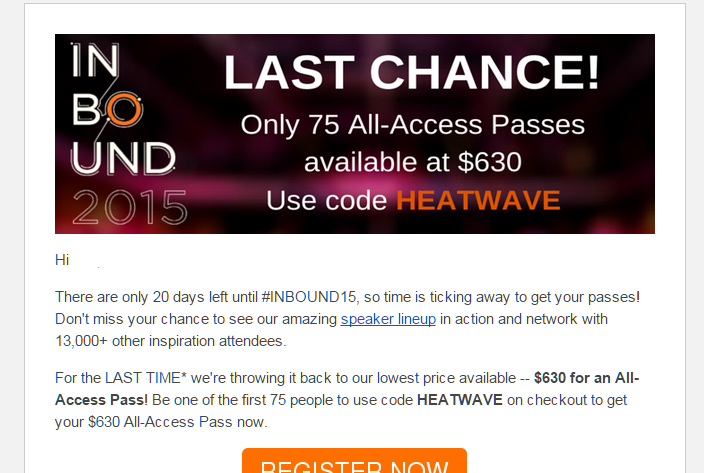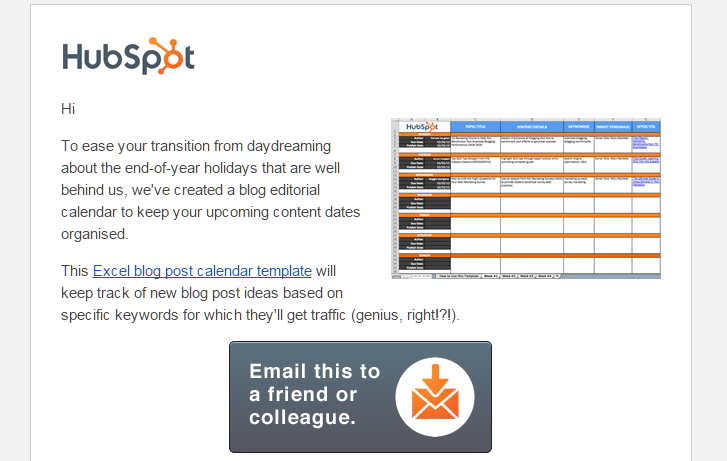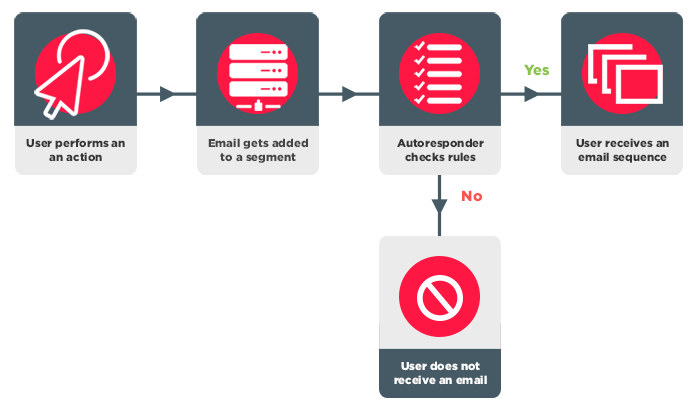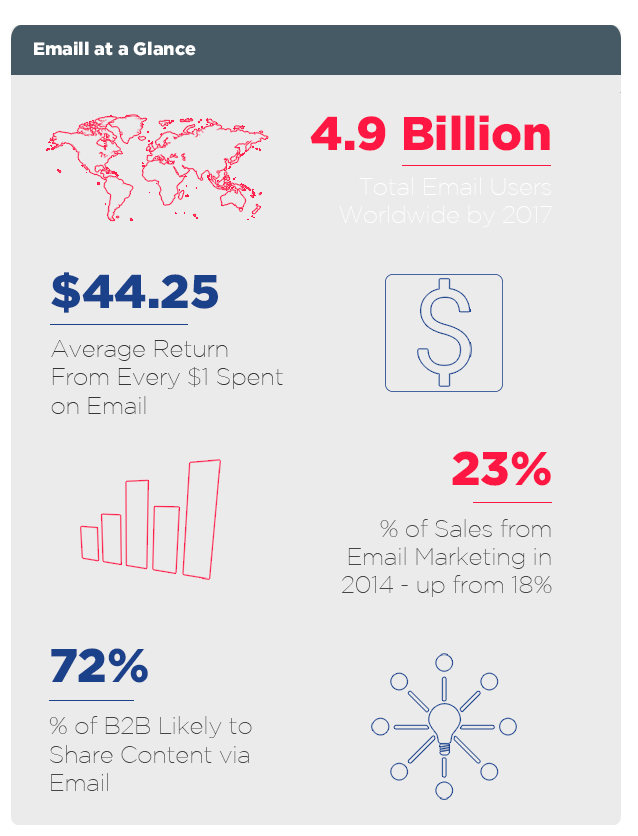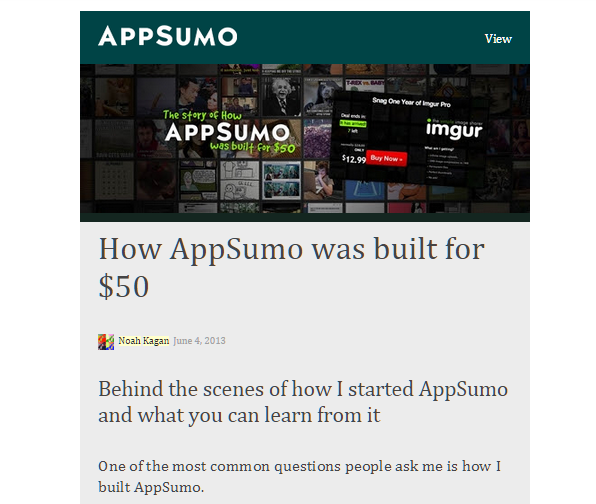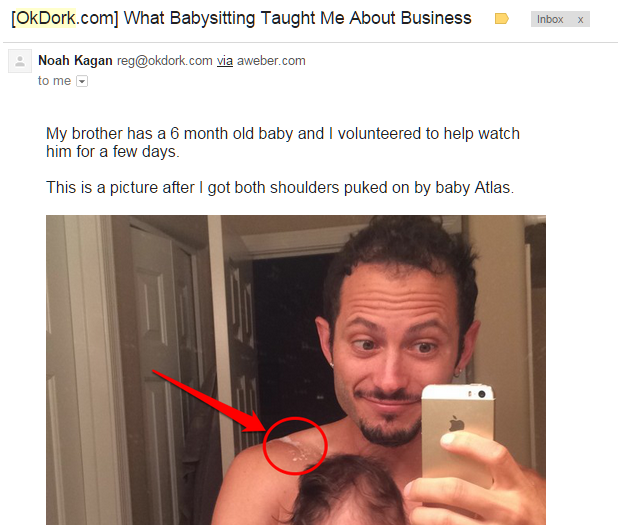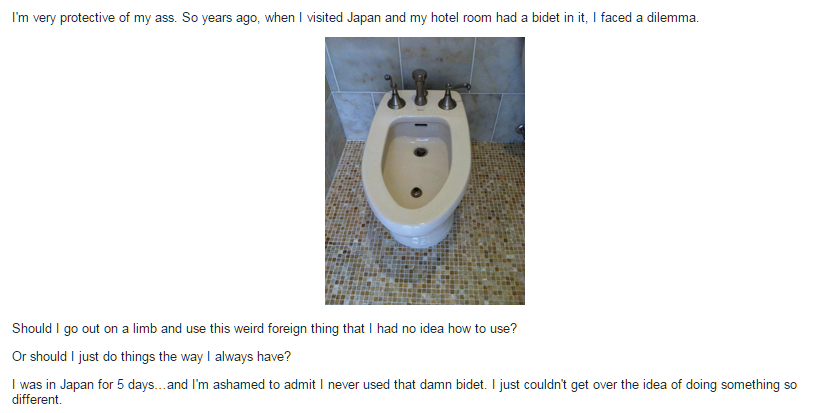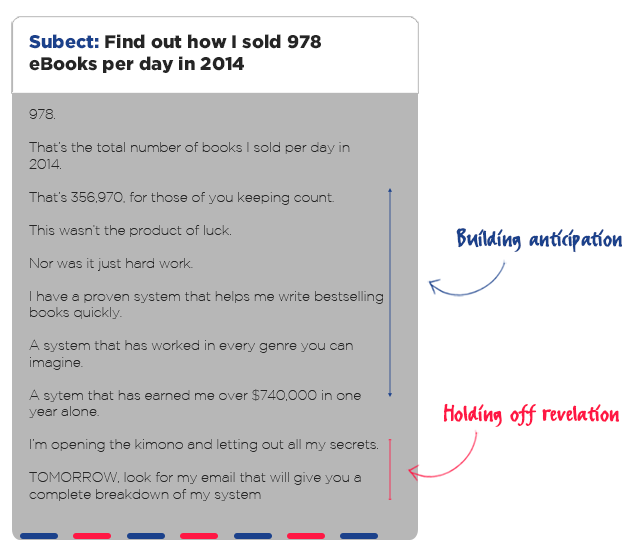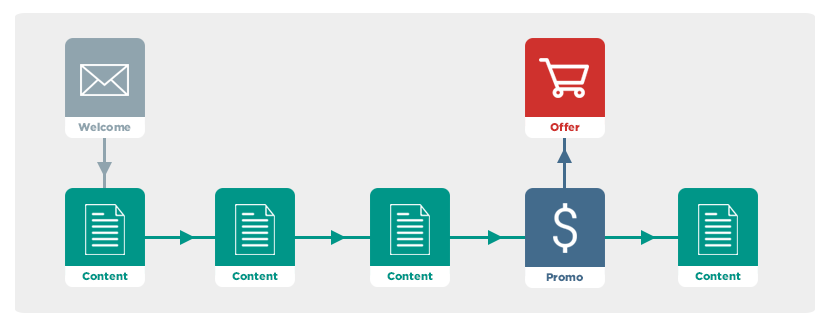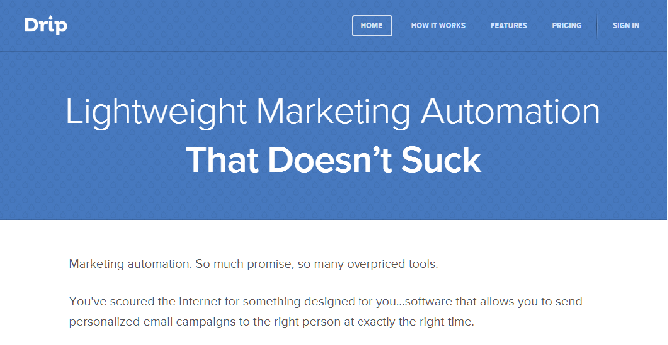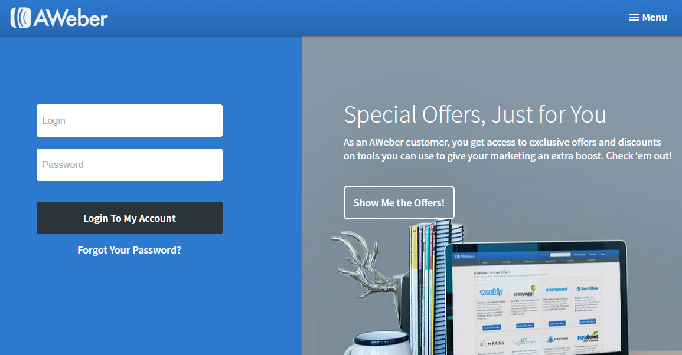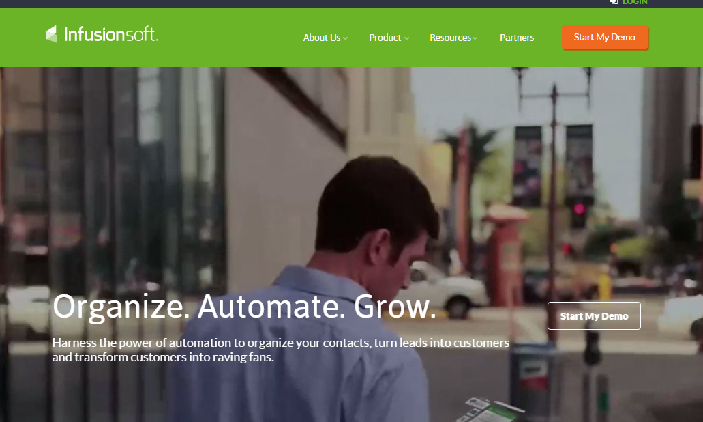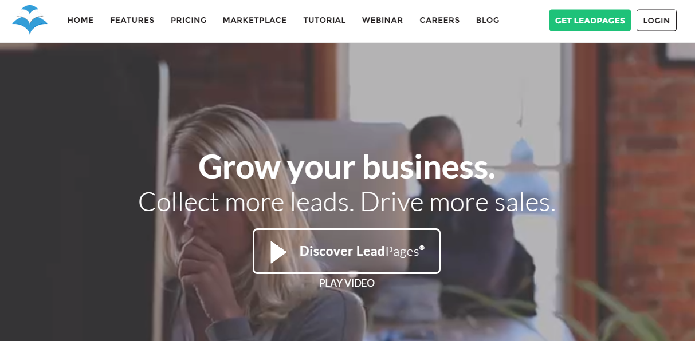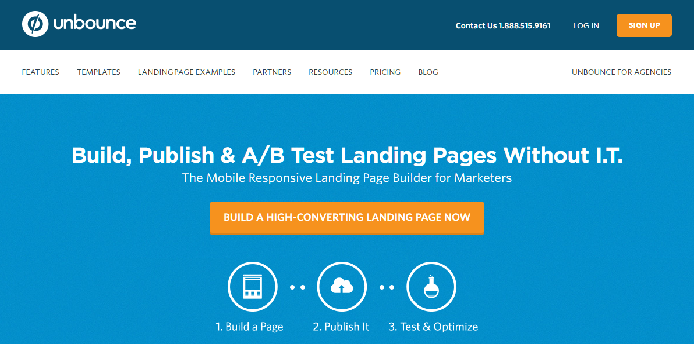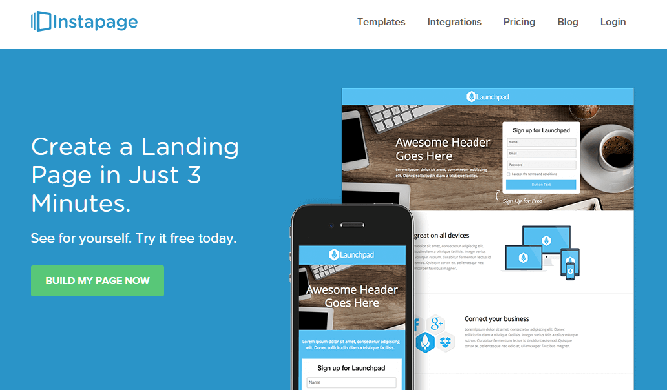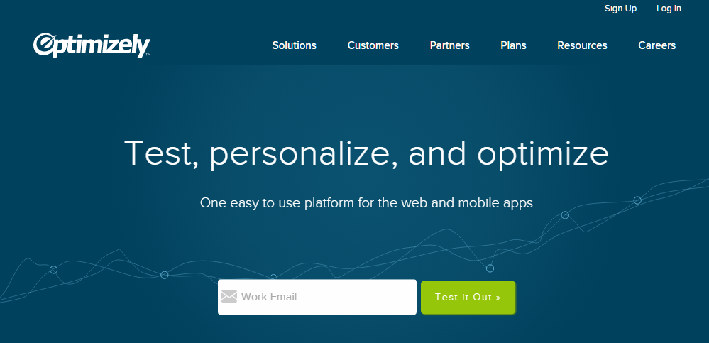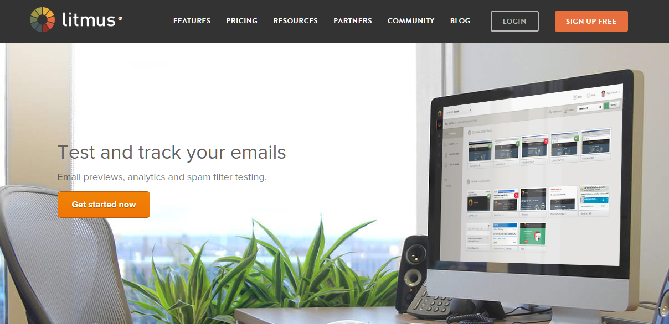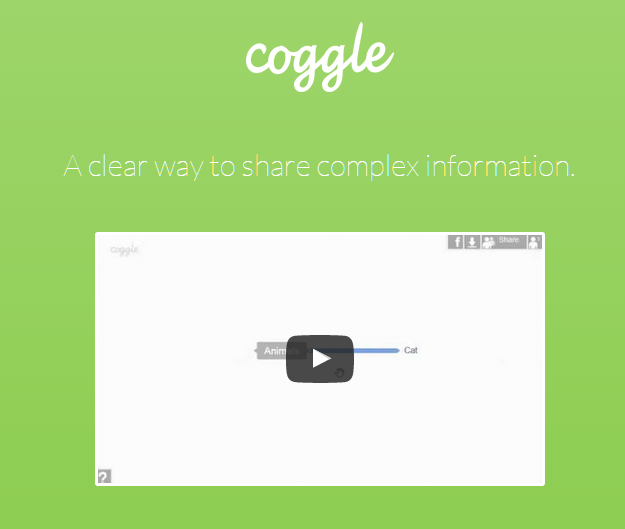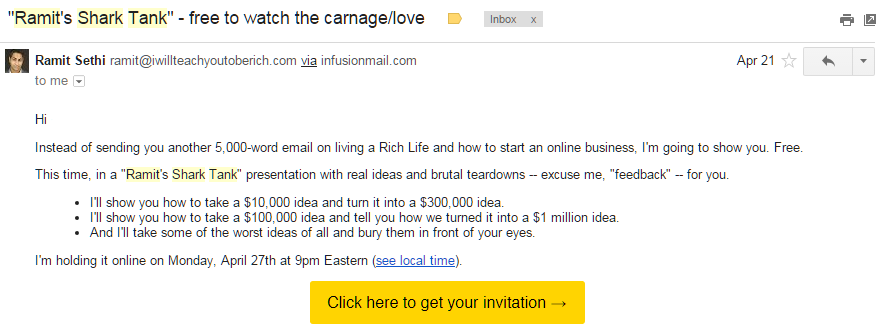Want to automate your entire selling process? You can.
Build an email list.
But the real trick is hanging on to that cherished digital real estate long enough to figure out if your subscriber is just another time-sucking “freebie seeker” or if you can turn them into a sale.
You can’t just blow up your new subscriber’s inbox with offers and expect them to buy.
That’s like going in for steamy kiss as soon as your blind date walks up to you. Totally wrong timing. Totally won’t work.
If you’re going to take email marketing seriously (which you probably should considering it yields an average 4,300% ROI according to the Direct Marketing Association), acquiring that golden address is the start of something much bigger…
It’s the start of a beautiful, ongoing relationship. A relationship that ends up with you building a list of ultra-qualified customers who actually thank you for taking their money.
And how do you start that relationship off right?
Autoresponders.
Autoresponder email sequences turn acquaintances into Best Friends Fo’ Life (best friends who keep putting money in your pocket then go tell all their other friends to do the same.)
They nurture subscribers, help you “trim the fat” and dispose of any tire-kickers, and like totally send your open and click through rates through the roof.
Okay, what is this “sequence,” why is it so amazing, and how can you get one?
Sit back, kick off your shoes, get comfy, and follow along with a pen and notepad because I’ve covered it ALL in this post.
Before I get into the good stuff, let’s get one thing straight (This is gonna be a long one, so I don’t want you wasting your time if you’re not ready to hear this yet).
Who is this Post For?
If you’ve never sent an email, this post isn’t for you…
If you’ve never heard of MailChimp, Aweber, or Constant Contact, do yourself a favor and read another post instead.
But if you:
- Know a bit about email marketing, but have never created an autoresponder email sequence before…
- Have sent the odd newsletter or sales email, but never written an in-depth, conversion oriented autoresponder sequence…
- Own multiple products and want to automate your sales…
… Then you NEED to read every word of this post. Seriously – it is that important.
To make this all a little easier to digest (or skim read), I’ve broken everything down into 3 parts:
Part 1: Autoresponder basics
Part 2: How to write effective autoresponders that get results
Part 3: Cool tips, tools, and tricks for maximizing your email marketing
Okay, ready to learn how to create autoresponder sequences that convert?
Let’s get started for real.
Part 1: Understanding Autoresponder Email Sequences
If you’re still wondering what’s so damn great about autoresponders, start here. You’ll get the low down on what they are, how they work, and why you needs one now.
What Is An Autoresponder Email Sequence?
“Autoresponder” is a marketing term for a series of pre-written emails sent out on a pre-defined schedule.
This isn’t rocket science – it’s basically just writing a bunch of messages, then telling your email marketing software to send them out on specific days.
Where it differs from conventional email marketing is in its purpose and focus. While conventional emails are all about telling readers about your new blog post or an upcoming sale event, autoresponder sequences seek to create a sense of “flow” between emails.
Not to be a bore, but before we get into how you can create a set of flowing emails that will engage readers and keep them looking forward to more, you should really know the difference between Notification and Narrative emails.
- Notification: Messages that notify the reader about something and keep them informed. This can be a weekly newsletter, an update from your blog, or a reader survey. There is no real connection between two notification emails. The email you sent last week doesn’t have to refer to the one you sent two weeks before.
- Narrative: Marketing messages that craft a broad narrative for the reader. Each email acts as a chapter in a story you create for your subscribers. Autoresponder sequences are narrative emails, which are great if you want to cultivate a relationship with subscribers. Think about it: Who doesn’t love a great story? They draw readers into your inner circle and captivate them with an ongoing story of some sort. They offer value. They give your reader a reason to keep an eye on their inbox for your next message. It’s this engagement that fosters the kind of relationship that turns a subscriber into a loyal paying customer (more on that in a minute).
You’ve probably noticed most businesses use a mix of notification and narrative-focused messages in their email marketing, depending on their end goal.
Here’s a couple examples from HubSpot:
This first email is a notification.
Like I said, these emails simply keep readers in-the-know about new blog posts, events, one-time offers, whatever. In this case, it’s an offer to register for an event. For someone on your list who is already a loyal fan and follower, this reminder is all they need to opt in. But for a newer subscriber who hasn’t yet been “sold” on your brand, this email won’t convert as well.
This second email is part of a narrative-focused (autoresponder) set of emails I received:
The big difference here is instead of notifying your readers of an offer right away, these emails gently nudge your readers down the sales funnel with an ongoing narrative.
Narrative emails are focused on helping your readers solve a specific problem. They educate and offer tons of value over the course of more than one email.
Why does this matter?
Here’s a quick mini-marketing lesson for you:
The Rule of Seven.
According to this age-old rule, your reader needs to hear or see your marketing message at least 7 times before they’ll feel comfortable handing you their hard-earned dollars. In other words, if your goal is to maximize conversions, a single email isn’t going to do the trick.
There’s no magic to the number 7. That’s not the point. The point is that you need to keep repeating your message until your readers hear you. Or until they decide they need you. If you keep your message in front of your reader, eventually when the timing’s right, they’ll buy whatever you’re selling.
But that’s just half the story.
Your readers don’t just need to know what you’re selling; they need to actually like and trust you too.
Subscribers need to be spoon fed relevant, educational content that somehow adds value to their lives. They want to read real, authentic stories that show them you’re a real human being, not just another seller who’s filling their inbox with offers. They want to be wooed. In other words, you’ve gotta give a little if you want to get a little.
Do you see how autoresponders work so darn well with these 2 basic rules of marketing?
By creating a narrative of autoresponder emails, you take your readers on a journey. You feed them bits of the story one chapter, or email, at a time. Each chapter contains tips, case studies, and other consumable content that engages your readers. With each email you send, readers are more captivated by the story and connected to your narrative.
On a sneakier level, these emails are cultivating a more personal relationship and building trust between you and your readers.
Whether they know it or not, each time your subscriber opens another email along the journey, they’re being pushed ever so gently a little bit further down the path of your sales funnel. You take them from point a to point b following a predetermined schedule to get the timing right.
Once readers reach your actual offer, they’ll have received so much valuable content and developed such a trusting relationship with you along the journey that it’ll seem like a no-brainer to press that “buy button.”
Then all you have to do is rinse and repeat and watch your loyal list of subscribers who can’t wait to open your emails and give you money grow.
Now that you know all the theory behind what makes autoresponders work, let’s dive into the technical stuff.
How Do Autoresponders Work?
First things first: You’ve come up with a great freebie like an eBook to attract leads. Once they give you their information, your magical journey begins.
There’s two ways to go from here:
A. You can start sending your autoresponder emails manually on a set schedule after you capture a lead.
OR
B. You can do what smart marketers do and automate your email sequence.
Do what you want, but I’m all for working smarter, not harder. And with automation software, your autoresponder won’t just convert your leads into loyal customers, it’ll do it all without you having to lift a finger.
Here’s how it works:
- A user performs a specific action, like opting in for a free eBook.
- The user’s email address gets added to an email segment, or a list of subscribers who took the same action.
- The user then automatically receives a series of emails from you on a predetermined schedule created specifically for that segment. This way, your messages are personalized, specific, and targeted instead of generic and cold. This is how you maximize open rates and conversions.
Here’s another option:
With automation software, you can also determine what user actions will trigger your autoresponder sequence. These are called ‘autoresponder rules’.
These rules can be customized to ensure you send the right message to the right person at the right time.
For example, your rule might be that anyone who downloads a free eBook receives a series of emails. However, you can override this rule for subscribers who are already in your list, or have purchased a product from you already. This way you don’t look like a jackwagon who tries to get existing subscribers to opt in for the same thing twice.
The really cool part is…
Since this entire process – from opting in to email delivery – can be automated with the latest technology, you’ll have more time to zero in on driving traffic and improving conversions.
Why Are Autoresponder Email Sequences Important?
Three reasons:
- They can operate on autopilot, saving you tons of time.
- They send personalized messages to your different list segments, giving each segment the right offer at the right time. For example, fresh subscribers get a “beginners” email series that ends with a pitch for a cheap product. Existing customers get more salesy emails that pitch a higher ticket product.
- Their narrative focus nurtures leads and builds a powerful and profitable relationship between you and your subscribers over time.
Considering that email marketing typically turns every $1 into $44.25… and businesses that use email to nurture leads (like autoresponders) generate a whopping 50% more ready-to-buy leads at a fraction of the cost…
Autoresponder sequences are a no-brainer. And as I’m about to show you, it’s surprisingly easy to set them up once you know what you’re doing.
Part 2: How to Create an Autoresponder Sequence
Now we’re getting into the meat and potatoes. Follow along and you’ll learn how to create your own successful autoresponder sequences. And every successful autoresponder absolutely must start with a plan.
Planning Your Autoresponder Sequence
You’re busy and you want to see these things in action, so I know you probably want to start hammering out emails right now. But if you ignore the planning phase, your emails will suck. I promise. Whether you like it or not, planning is crucial. This is where you develop your narrative and figure out how you’re going to engage your readers on a deeper level than “Hi, here’s my product. Please buy it.”
Every marketer you ask will have different opinions about how to plan, but in my experience, this process straight up works:
Step 1. Begin from the End: Understand Your Business Goals
An autoresponder sequence without a firm business goal is like a plane without landing gear. Sure, you might be able to take off and even fly around for a bit, but there’s no way you’re going to land without crashing.
Your goal determines how you’ll create your sequence and how you’ll promote it. This goal can be anything, but here’s a few examples:
- Developing a relationship with your readers (particularly useful for authors, coaches, mentors, etc.).
- Pitching a product (for marketers and salespeople).
- Developing your brand (good for product-focused companies).
- Ensuring ‘top of mind’ awareness (good for everyone).
There’s no silver bullet for figuring out your business goals – that’s something you’ll have to figure out yourself. However, asking these questions won’t hurt:
- What are my primary products (if any)?
- What is my long-term product strategy (example: you might have a $7 info-product today, but plans for a $297 course further down the line)?
- What do my customers care about – relationships or price? Generally speaking, relationships are important for authors, coaches, bloggers, etc. For product companies, the actual product and its price hold more value for readers.
- What stage of the buyer’s journey are my subscribers currently in?
- What is my existing relationship to my subscribers?
- What is the price point of the product(s) I’m promoting (more expensive product = more persuasion)?
Once you have this goal figured out, grab a dry erase board and write it down in big bold letters. Something like:
Sell More Products
Or
Establish Relationships
Place this in a visible spot in your office. Glance at it every time you write an email – it’ll help you frame the narrative in a way that furthers your business goals.
Step 2. Frame Your Narrative
Before you send out a single email, it helps to do some high-level thinking on the narrative you want to craft in each autoresponder email sequence. Obviously, this will be defined by your business goal, but it doesn’t have to be the same for each segment in your email list.
For example, let’s assume that you’re a fitness trainer. Plenty of people land on your site and sign-up for your email list. Some of these have read dozens of blog posts on your site and have been working out for 6+ months. Others just landed on your site for the first time and are completely new to fitness and exercise.
Obviously, it doesn’t make sense to approach both groups the same way.
- For people new to working out, you want to come across as a trusted, experienced mentor who will guide them through their first steps to getting fit.
- For experienced subscribers, you want to position yourself as a respected authority who will help unlock peak performance and fitness gains.
Thus, for the first group, you might have an email sequence that says something like:
The step-by-step guide to losing 10lbs in 10 weeks
For the experienced group, your email sequence can say something like this:
Beat your PR with this advanced guide to deadlifts
The bottom line is: Think carefully about the narrative and positioning before you sit down to write. Break down your email list into segments based on their existing relationship with you, experience level, etc. Then craft a narrative with your emails that fits your list’s unique expectations.
Step 3. Always be Aware of Your Funnel
For the marketing newbs, a sales funnel is a visual representation of all the steps that go into selling a product. It’s a pretty important concept in marketing and affects the shape of your campaign.
You can fill a library with books on sales funnels, but for now, here’s all you need to know:
- Raw leads enter the top of the funnel. These are people who know little about you, your products, or sometimes, even their own problems…
- Leads who are not ready to buy yet, or who don’t want what you have to sell, are filtered out at each subsequent stage in the funnel (each email you send qualifies leads and sends tire-kickers packing)…
- Qualified leads stay on the journey and get pushed down the funnel. These leads have been nurtured and are much more likely to buy.
No matter what your ultimate goal is, every email you write must serve a purpose: to push qualified subscribers further along the sales funnel.
This is a two-step process:
- Offer more value in each email.
- Ask for more from the subscriber with each email.
With each email that you send, you offer more and more value and relevant content. But there’s a catch: In exchange for this value, you demand more action from the subscriber.
This seems counterintuitive. Why would you ask more from your subscriber if you want to keep them happily moving along down your funnel?
Two reasons:
- You don’t want to end up with a bunch of unqualified leads who aren’t going to buy what you’re selling… or a load of pain-in-the-butt tire-kickers just looking for the cheapest price. By making some demands from your subscribers, you eliminate the ones who aren’t serious and you don’t want anyway. For example, a subscriber who isn’t willing to click on a blog post that gives them even more information on a topic or sign up for an email isn’t the kind of lead who is likely to turn into a paying customer later.
- Gradually increasing offered value helps gently nudge your qualified leads along the sales cycle. For example, the first email might be an introduction to a subject, but by email #5, you’re dealing with advanced topics. Subscribers who stick around until then are already engaged in the purchase process, understand the value of what you’re offering, and are more likely to buy.
As an example, you might have an email sequence that looks something like this:
- Email #1: Offers massive value but doesn’t ask for anything in return.
- Email #2: Offers value and asks subscriber to check out your blog post in return.
- Email #3: Offers even higher value but also asks subscriber to perform an action such as liking you on Facebook.
- Email #4: Offers massive value but also pitches a $7 product.
And so on. As you can see, the demand from the subscriber increases along with the value provided. The more action your subscribers are willing to take, the more likely they are to be willing to buy.
Alright. You’ve figured out your goals. You’ve got a plan for maximizing the conversion power of your autoresponder. Now you’re ready to ask…
How Do You Write Autoresponder Emails?
Depending on your experience and skill set, the actual writing process can be the most tedious and frustrating part of email marketing. I’ve put together this section to point you in the right direction and hopefully make the writing process a little easier.
You don’t have to write David Ogilvy-level copy, but it does help to follow some rules.
Here are mine:
Rule #1 Give before you ask
This is the golden rule of not just writing autoresponder sequences, but of all marketing: Give value before you ask for a favor.
Think about it: Anybody who visits your site doesn’t owe you a damn thing. They won’t give you their email addresses without a reason, and they definitely won’t tell you their budget, phone number, company position or address without a substantial bribe.
This bribe can be anything – a free eBook, an in-depth email, a sales page template, etc. When you share such bribes with your readers, they feel compelled to give back by performing an action, like clicking on a link, “liking” you on Facebook, buying a cheap eBook, whatever.
Remember what I said before: The bigger favor you plan on asking, the more value you better throw at your subscribers.
Keep this nugget of wisdom stored in the back of your mind when you craft your emails – if you want readers to take big action, be prepared to deliver big value.
Rule #2 First impressions matter
Your first email to a fresh subscriber will set the tone of your relationship. If you want to ensure your subsequent emails actually get opened, make a big impact by giving subscribers huge value without asking for much in return in this first email.
For example, when you subscribe to the AppSumo blog, the first email you get is an incredibly valuable breakdown of how Noah Kagan built AppSumo for $50.
It ties in perfectly with the theme of the email – how to turn wantrepreneurs into entrepreneurs. That Noah could do it for a paltry $50 – and that he’s going to show you exactly how he did it – isn’t something you easily ignore or forget.
Subscribers instantly need to know that your emails are worth paying attention to. Then they’ll start to look for you in their inbox.
Another way to start out your sequence is by delivering your lead magnet and offering a friendly welcome.
For example, maybe you’re health and fitness coach who has attracted some fresh leads with a sample weekly meal plan you put together.
Your first email thanks readers for signing up and gives a quick reminder of how much more awesomer their lives are going to be now that they have this valuable resource. Give the download link to your meal plan (or whatever your lead magnet is) and THEN…
Tell your subscriber how over the course of the next few days/weeks you’re going to be sending them even more free tips to make their lives better and kick-start their health and fitness goals.
Bullet out how these educational tips, real-life success stories, etc. are going to benefit your subscriber even further. This will have your subscribers chomping at the bit for your next email and drive those open rates.
I’ll give you some ideas of what content to include in your emails later in the post, but the point is to start off strong by injecting value into your reader’s inbox – with no strings attached. Then later on in the sequence, you can ask subscribers to contact you for a free consultation, visit your blog, or take action on whatever your end goal is.
Rule #3 Add some personality
Unless you’re autoresponder is being shipped off to a group of robots, don’t write boring copy. Be real, be human, show some personality in your emails. I’m not saying you need to crack jokes and go overboard. If you’re trying too hard to be quirky and funny (but you’re not), your readers will sniff it out.
What I am saying is that your emails don’t have to be the same old, cut and dry copy. Give your readers something they’ll actually have some fun reading, and you’ll get results. I guarantee it.
To write better autoresponders, try punching up your copy with these tactics:
Storytelling
Storytelling is the oldest trick in the copywriter’s book. That’s because it works.
Storytelling isn’t so much about telling a story as about withholding information.
Keep your readers hooked on your line by revealing the story piece by tiny piece, slowly reeling them in with more irresistible little gold nuggets. Don’t give away the whole farm in the first paragraph. Tease readers with a glimpse here, a tantalizing concept there, evoking their imagination and curiosity.
That’s how you make sure your readers stick around til the end instead of hitting “unsubscribe” halfway through.
For example, take a look at this email from OKDork’s Email1k course. Noah starts off talking about babysitting his nephew and how it taught him about business.
This email could’ve quickly turned into another lame “4 business tips you should try right now!” you see floating around the Interwebs every single day. But instead, Noah crafts this email into a very personal and engaging story.
Try using this fun little move in your next email:
Tell your readers that you’ll reveal something right at the very beginning. Offer some hints as to what that something might be. BUT… don’t reveal it until the very end. In between tell the readers a story of how you discovered that something.
Remember: You don’t need to tell readers your life story. Again, think of things in bits and pieces. Same goes for your storytelling.
Give people a glimpse into your life, focus on a little sliver of your experience.
And be sure to…
Add a personal touch
Do you like to feel like you’re talking to a bot every time you open an email?
Yeah, neither do your readers.
People crave authenticity. They want to hear that you’re a human just like they are. That you sometimes get clarity about your business while you’re standing in line at Chipotle. That you have a fear of public restrooms, too.
It doesn’t have to be anything complicated – just show them you’re a person, not a faceless corporation.
Ramit Sethi gives a great example with this email in which he starts out by talking about his encounter with bidets in Japan.
It’s weird, funny and maybe a tad inappropriate, but it also makes the email so much more damn fun to read.
Bottom line here is: Shed some light on your humanity. Your readers will thank you for it.
Be concise
The quickest way to kill any good vibes you’re building with your personality is to write your emails like college essays.
When you sit down to write an email. Forget everything you learned in English Comp.
Don’t try to sound all fancy and stuff. Stick to short, sweet sentences. Simple language that’s easy to skim read.
Remember: You want your readers to be as easy to open and read as possible. Don’t slow down your readers with big words and long paragraphs. Cut all the fluff. Try to use the smallest amount of words possible with maximum impact.
I recommend aiming for a grade 5 level on the Flesch-Kincaid reading ease scale. Use this website to check your reading level scores.
Write for the medium
An email is not a whitepaper or a press release. You aren’t writing for a generic audience.
This email lands in an inbox right between personal messages from a mom and a best friend.
In other words, email is a very intimate medium. And your writing needs to reflect this.
Here’s a few tips:
- Use Hi, Hey, Greetings from [place name]!, [Recipient First Name] at the beginning of the email – just as a friend would. Avoid formal greetings like Dear, Sir/Madam, etc. like the plague.
- Use short sentences. Keep plenty of space between paragraphs. Make your email easy to skim read.
- Address the reader directly by ‘you’. Make them feel that you’re sending a personal email to them alone.
- Write in a natural, conversational tone. Use active voice (“I launched the product”) over passive voice (“the product was launched by me”).
- Close with a friendly greeting such as Talk Soon, Take Care, Thanks! Avoid formal closes like Sincerely, Yours Truly, Regards, etc.
- Use power words: Words that compel action or create an emotional state in the reader. Here’s a great list of power words to get you started.
Now that we’ve covered how you can write emails your readers will actually enjoy, let’s talk about how to focus your emails.
Rule #4 Write with a purpose
You’ve heard this before, but I’m gonna say it again because it’s that important:
Every email must have a PURPOSE.
This is your email’s North Star. Without it, you never make it to your end goal.
Before you throw down a single word, make sure you’ve got some crystal clear clarity on why you’re writing this email.
Ask yourself “What is the exact purpose of this email?”
Then grab a pen and paper and write down the answer. It might be “Drive Traffic to Blog Post”, “Increase Facebook Likes”, etc. Tailor it to whatever your business’s end goals are and be specific.
Keep that piece of paper with your purpose close by while you write the email so it’s constantly on your mind. This purpose will also come in handy when you’re ready to call your readers to action. In your call to action (CTA), you’ll want to tell readers to visit your blog post, like your Facebook page, or whatever your end goal is.
Rule #5 Create emails that can be reused
Want to know how top marketers are able to write hundreds of emails for dozens of segments?
Simple: They don’t try to reinvent the wheel every time they send an email.
Instead… They write evergreen emails that never expire and can be reused with different subscriber segments.
For example, let’s say you have two lists – a list of long-time customers who occasionally read your blog and another list of fresh subscribers who’ve just downloaded their first free eBook from your site.
Let’s say you want to send an email about Marketing Hacks. Here’s how you can fine-tune it to easily fit both lists:
- First, you can remove more advanced parts from the email and send it to new subscribers, labeling it Marketing Hacks for Beginners.
- Second, you can focus on marketing hacks that utilize your products and send it to existing customers, labeling it Marketing Hacks for Making the Most Out of [X Product].
See how that works? Easy peasy.
In a perfect world, you’ll have a whole library of “evergreen” content you can pull from and tweak to send to different subscriber segments whenever need be.
If you don’t have this yet, go online and start researching content that never gets old to your niche market. Buckle down and make yourself write a couple of these evergreen emails every now and then. You’ll be glad you did.
Rule #6 Use open loops
Here’s some (fun) homework:
Open YouTube and look up your favorite monster movie trailer (say Godzilla). Take note of how the trailer teases by showing glimpses of the beast and promising that there’s something big, scary and shocking waiting for you.
By the end of the trailer, there’s so much anticipation to see the monster that you’ll want to watch the movie even if you think it’s gonna bomb.
This is a storytelling technique called ‘open loop’ or ‘tension loop’. Movies and television use it all the freaking time because it works. It’s the seductive, mind-warping trick that keeps you glued to your screen during Game of Thrones and makes you feel like you might die of anticipation before the next season comes out.
Here’s how it works:
An open loop starts off by revealing some gigantic promise or really crazy thing (like how you made a million dollars) that instantly grabs people’s attention. But open loops don’t just give you the whole shebang of how it all happens right then and there. Instead, once they get your undivided attention upfront, they create anticipation by holding off on the rest of the story until later. By now, you’re invested. You’ve got to stick around and see what happens, so you keep watching/reading.
If you use open loops correctly, autoresponders work the same way, creating anticipation and engaging readers in your narrative.
Try it yourself:
- Write an email telling readers that you’ll reveal something big (like “How I sold 978 fiction eBooks per day in 2014”).
- Craft a story about how you came across this big revelation (use storytelling).
- Tell readers that you’ll actually unveil your process the next day at a specific time (keeping readers on the edge of their seat as they watch their inbox for your next message)
Here’s an example:
An open loop, like with this example, works for three reasons:
- It pre-qualifies readers. If you promise to reveal something big in your next email, readers who open this message have already shown active interest in your offer. Since these readers are pre-qualified, they’ll convert at a much better rate.
- It generates anticipation: As great as your emails might be, your readers have no real motivation to wait for your next email in their inbox. By promising to reveal a secret, then holding it off for the next email, you generate anticipation and get higher open rates.
- It ties emails together: One of the biggest mistakes marketers make is creating autoresponder emails in isolation. Since one email doesn’t tie into the next, it doesn’t really engage readers in your narrative. By using open loops, you’ll ensure that your emails flow into one another.
Your ‘big reveal’ should also be big enough to hold the reader’s interest. But don’t overdo it. Tease your readers too much and they’ll just hit “unsubscribe.”
Rule #7 Offer proof
This last rule for writing autoresponders that convert is critical, especially when you’re writing to hot leads who just subscribed. By proofing the new concepts you’re introducing your readers to, you are automatically going to beef up the content of your emails.
Even better, offering proof nudges readers further down your sales funnel and makes it easier to convert them into paying customers.
Here’s how:
Let’s go back to the know, like, and trust rule of marketing. It’s a fairly safe bet if your subscribers know and like you, they’re going to open your emails and read most of them.
But…
When it comes to getting readers to take the next step and hand you their credit card…
Trust is key.
And as it turns out… proof builds trust fast.
For example, let’s say you’re an author, and your ultimate goal is to get people to sign up for coaching with you on how to write eBooks. Before people are going to be willing to pay you to coach them, they need to know you actually have a clue what you’re talking about.
So, you can use an open loop like I talked about in Rule #6 to tell the story of how you “sold 978 fiction eBooks per day in 2014.” This says to readers “I really did this and so can you. Now let me show you how by working with me.” You don’t have to just tell them this. You can also show screenshots of your earnings, etc. to further prove your expertise and success.
Now, there’s no need to make yourself into a pompous jackass. That’s just going to make you lose readers. But the idea is to set yourself up as an authority in your niche with real-world experience so people will trust you enough to opt in.
Proof is also really important when selling physical products. Let’s say you’re end goal is to have readers buy a bag of your organic green tea.
You need to 1. Prove what sets you apart from the sea of competition and 2. Prove the benefits of your product.
You can do this by incorporating testimonials into your email, using case studies that prove some of the specific health benefits of green tea, whatever works.
There’s a ton of ways you can show proof. Just make sure you’re sprinkling it into your autoresponders somehow – especially if you’re writing to fresh subscribers who haven’t given you their trust yet.
Here’s a quick list of ways to show trust-building proof in your emails:
- Use snippets of case studies and clinical trials
- Incorporate brief testimonials
- Show before and after photos (especially for health products)
- Tell your own story of how you went from point A to point B in X amount of time
- Show screenshots of earnings, etc. for cold, hard proof readers can see
Try using one or more of these in your next autoresponder and watch your conversions skyrocket.
But good writing is all that makes an autoresponder work its magic on your readers. You’ve got to get your timing right. That’s where it comes in handy to know:
How to Structure Your Autoresponder Sequences
Listen up: The order you send your emails in will affect their outcome. Send a promotional email too early in the campaign and you just might lose your subscribers. Hold off for too long and your red-hot leads might go cold.
Depending on your subscribers and your business goals, you can try out different sequences, testing your emails in various orders of arrival
Here’s one sequence you can try:
- Marketing oriented
This one of the most widely used sequences, particularly among internet marketers. The idea is simple: Establish trust by offering loads of valuable content, drop in a promo, then go back to valuable content.
This is Gary Vaynerchuk’s “Jab, Jab, Jab, Right Hook” in action. It works because it balances commercial and non-commercial content. Your subscribers are more likely to trust a promo email if you’ve already primed them with rock-solid content.
- Relationship oriented
If you’re a blogger, author, consultant, or coach who wants to establish a long-term relationship with your subscriber, this is the sequence for you.
Instead of sending a promo email once in a while, a relationship-focused sequence involves sending over subscribers to a blog or any other asset that you own where you can pitch your products.
Use this sequence if you’re in for the long-haul and value relationships over sales and commissions.
- Sales oriented
Sometimes, you have a segment that’s itching to buy. For these eager subscribers, a “brute force” sequence that pushes promo after promo can work – at least in the short-term.
I don’t recommend this for most people. If you must use it, be prepared to wave any long-term relationship with the segment goodbye.
Ultimately, there’s no one right way to structure your autoresponders. The “secret” (once again) is to just keep your purpose, or your end goal, in the forefront of your mind.
Then structure your sequence to give you the end results you want (ie. more sales, less relationship or more relationship and higher ticket sales over a longer period of time).
Alright, you’ve got the theory, you’ve got the “how to” instruction, now you just need to put it all into motion…
Part 3: Tools, Tips & Tricks
Congratulations! If you’re crazy enough to have actually read this far, you now know how to write amazing autoresponder email sequences that achieve your goals.
But there’s one ingredient still left: the tools that actually make all this happen.
Let’s wrap up with a list of my favorite tools for creating autoresponder sequences. Plus I’ll throw in a few handy tips and tricks to maximize your returns from autoresponder sequences.
Tools
You’re free to use whatever email marketing tool you use currently – most have autoresponder capabilities built-in.
But if you’re looking for ease of use, reliability and features, I recommend the following:
Lightweight email marketing tool designed from the ground up for sending autoresponders. Super easy to use and works exceptionally well for small to medium-sized lists.
One of the oldest email marketing tools around, and still one of the best loved. It’s got a ton of features, even though the user-experience can be a bit clunky. Offers a free trial so you can try it risk-free.
InfusionSoft is more than just email – it’s an entire CRM for small businesses. At a starting price of $199/month, it’s not cheap, but it’s powerful, capable and will save you a ton of time – especially if you don’t already have a CRM.
Lead Generation Tools
Before you can send your emails, you’ll need a way to capture them first. Leadgen tools have come a long way in the last few years, and while there are plenty of options on the market, I recommend these two:
LeadPages offers an entire suite of tools for making landing pages and capturing emails. It’s robust, easy to use and at $25/month, relatively affordable.
Unbounce is the landing page creator for marketers who love their A/B testing. It’s not quite as easy to use as LeadPages, but it has customization options second to none. Prices start at $49/month.
If you want something that allows easier customization than LeadPages, but doesn’t use the ‘everything and the kitchen sink’ approach of Unbounce, you can check out InstaPage. It’s easy to use, fast and works with most popular email marketing tools.
Prices start at $29/month, though there’s a free plan as well.
Other Tools
Pick one from each of the two categories above and you’ll be well on your way to creating great autoresponder sequences. But if you want to take your autoresponders to the next level, you can check out these tools as well:
Most landing page tools boast some sort of split-testing capabilities, but if you want to rev it up a notch, try out Optimizely. It’s the gold standard as far as split testing is concerned and will help you test virtually every element on your site.
Don’t know where to start testing? This article should help.
How many of your emails actually land in inboxes? Do they look equally good on all devices and browsers?
Litmus will give you answers to these questions. This email testing and analytics service goes beyond what your email marketing tool can tell you. Powerful stuff if you’re sending millions of emails.
Coggle.it is a tool for making mind maps and organizing information. It’s got nothing to do with email marketing, but it’s very useful for brainstorming. I like to use it to chart out my email sequences and craft a narrative across all emails.
Getting the Most Out of Autoresponder Sequences
- Use discounts with scarcity in promo emails
One way to get readers to take action on a promo is to throw in a discount and limit its availability.
For example, you can offer readers a 25% off coupon valid only for the first 25 buyers. You can even send an update later with the number of offers still remaining.
This way, you’ll force readers who would otherwise file away the email for ‘later’ to take action.
- Create mini-courses
Have a 5,000 email ready to hit subscribers’ inbox next week? Instead of sending it as one message, you’ll see much better results by breaking it into a 3-part “mini-course”.
This tactic is becoming increasingly popular among marketers. Once again, it works because it creates ‘flow’ between emails. Readers who’ve read one-part of the course will look forward to reading the next part. Thanks to this reader buy-in, you’ll see much higher engagement and conversion rates.
Best of all, you can even offer this as a standalone mini-course and use it to capture emails.
- Plug in a blog post instead of directly promoting a product
It’s tempting to throw in an affiliate link in a promo email to get some quick commissions. However, you’ll see much better conversion rates if you plug in a blog post promoting the product instead.
This has three benefits:
- It doesn’t harm your relationship with your readers. Since you’re not directly promoting a product, your relationship with your subscribers remains non-commercial.
- It gets you better conversion rates. A reader who clicks through to a blog post link has already demonstrated interest in the offer. Result = better conversion rates.
- It gives you more flexibility. Email allows you limited room to experiment with content and offers. By directing readers to a blog post, you have more room to try out different ideas.
- Ask questions and feature answers in future emails
An email is a conversation, and you can’t really have a conversation if you’re the only one talking.
A way to counter this is to ask questions in your emails.
Something like: “What’s the biggest challenge in scaling your business?”
Ask people to send in their responses either via email. You can even use Google Forms to collect responses, but it’s less efficient.
Once you collect some answers, create another email featuring a select few answers, and offering your own solutions for the same.
For example, if someone tells you that their biggest challenge is getting traffic, you could write an email on how to get traffic. Feature the original answer to ensure a senses of continuity between emails and show that you’re actually engaging with readers.
Something like:
“John, who runs an eCommerce store, said in response to my question last week that his biggest challenge is getting traffic. So in this email, I’ll share with you my secret methods for attracting tons of traffic without spending a dime.”
Ramit Sethi takes it one step further by running his own version of ‘Shark Tank’.
This runs over the course of several emails, so readers have a reason to look forward to his messages.
- Repurpose existing content for emails
How do you come up with fresh content for your email subscribers?
You don’t.
If you’re running a successful website, you probably already have a large library of articles, blog posts, and eBooks. Instead of writing fresh content, you can easily repurpose them for your email audience.
Try breaking an old blog post into a short email-only tutorial, or turning an eBook into an email mini-course. You’ll be surprised how much mileage you can get out of your old content, especially with fresh subscribers.
Stop trying to reinvent the wheel and pull from the valuable content you’ve already created once.
Final words…
There’s no magical method to hanging on to your subscribers.
No one, right way to turn a list of freshly acquired followers into a loyal tribe of paying customers.
But here’s the deal:
If you want to make sure your emails get opened and read not just tossed in the trash…
If you want to get your readers to feel like they really know you… and actually like and trust you enough to give you their money…
If you want to save yourself a ton of time and energy and build out an automated sales funnel that keeps filling itself with your ideal customers…
Then autoresponders are your best bet. I’ve used them myself to build lasting, lucrative relationships with my clients in my copywriting biz.
The best part is…
There are now tons of tools out there built to support autoresponders and make it even easier to set your sequences up on autopilot.
I know the tips, strategies, and tools I’ve covered in this post will help you maximize your ROI with autoresponders.
All you have to do is take the first step and start somewhere.
If you’ve never written a narrative-focused email, try it today.
If you’ve never mapped out your business’s end goal before crafting an email, why not?
If you’re looking to optimize your autoresponders and opt-in pages, try split testing with one of the tools I’ve listed above.
Just start somewhere today and you’ll be well on your way to where you want to be tomorrow.



